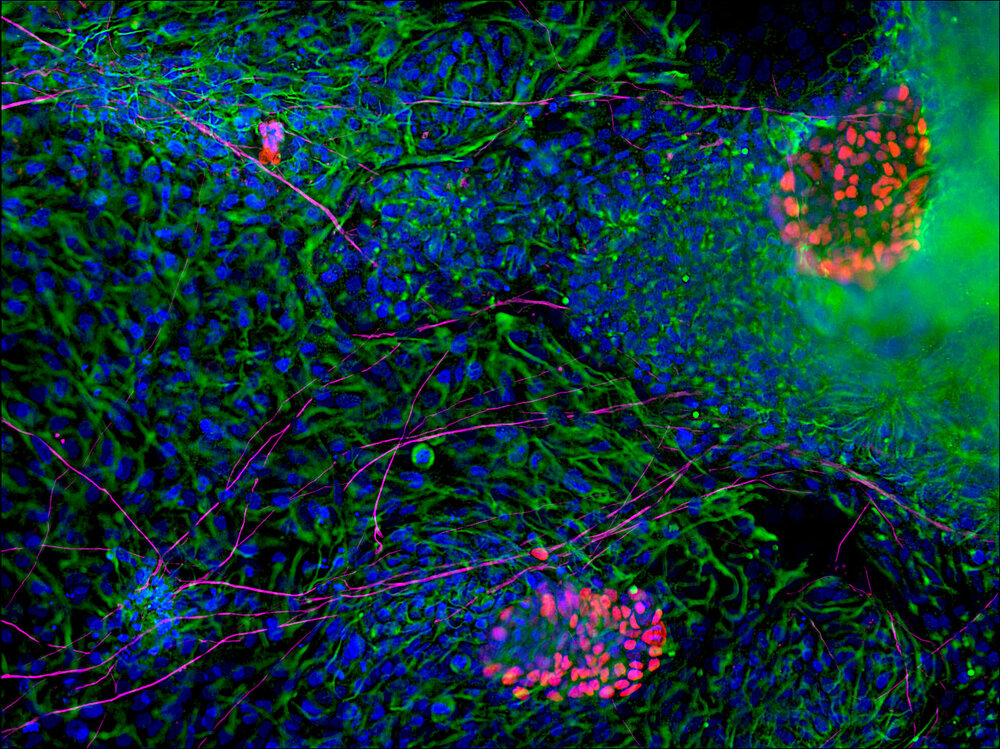Vision
ULB CENTER FOR DIABETES RESEARCH
“If you think research is expensive, try disease.”
— MARY LASKER, AMERICAN HEALTH ACTIVIST AND PHILANTHROPIST
Diabetes poses a threat to the affected patient and to society, given the dramatic increase in its prevalence in recent decades. Pancreatic β-cell failure is central to the development and progression of most if not all forms of diabetes.
None of the currently available drug treatments for diabetes modify the progressive nature of the disease. For many years, research has been hampered by the very limited access to human β-cells. At the ULB Center for Diabetes Research, we strive to use experimental models as close to the human disease as possible, namely human islets, human β-cells, human induced pluripotent stem cell-derived β-cells and humanized mice.
The work in human cells is important, since rodents often fail to recapitulate key pathophysiologic features of human diabetes. These novel in vitro and in vivo models are developed in close connection with the clinic. A better understanding of the pathogenic mechanisms driving β-cell failure and diabetes development and the translation into novel therapies will enable to develop new preventive approaches and better diabetes management, thereby reducing the impact of the disease.
“Progress in science depends on new techniques, new discoveries and new ideas, probably in that order.”
— SYDNEY BRENNER, SOUTH AFRICAN BIOLOGIST, NOBEL PRIZE IN PHYSIOLOGY OR MEDICINE IN 2002

Induced pluripotent stem cells spontaneously differentiate into the 3 germ layers, demonstrating their pluripotency.
Mesoderm = vimentin in green; neuroectoderm = βIII-Tubulin in purple; endoderm = SOX17 in red; nuclei are shown in blue.

